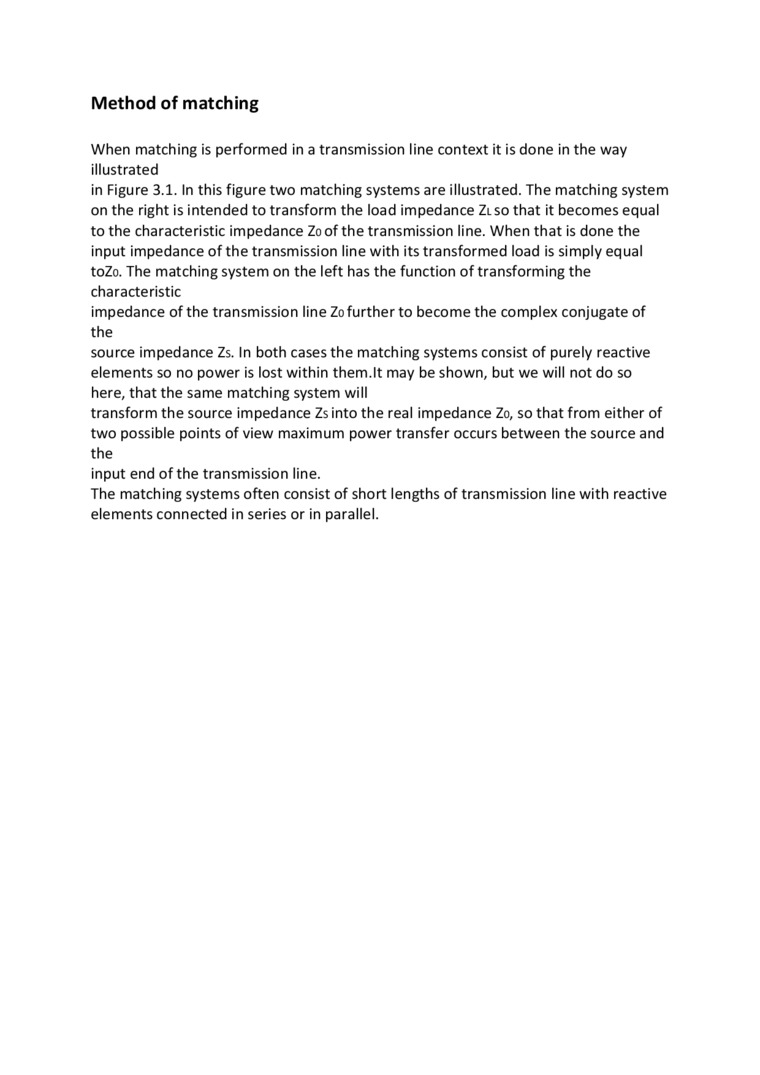71016

Method of matching
When matching is performed in a transmission linę context it is done in the way illustrated
in Figurę 3.1. In this figurę two matching systems are illustrated. The matching system on the right is intended to transform the load impedance Zlso that it becomes equal to the characteristic impedance Zo of the transmission linę. When that is done the input impedance of the transmission linę with its transformed load is simply equal toZo. The matching system on the left has the function of transforming the characteristic
impedance of the transmission linę Zo further to become the complex conjugate of the
source impedance Zs. In both cases the matching systems consist of purely reactive elements so no power is lost within them.lt may be shown, but we will not do so here, that the same matching system will
transform the source impedance Zs into the real impedance Zo, so that from either of two possible points of view maximum power transfer occurs between the source and the
input end of the transmission linę.
The matching systems often consist of short lengths of transmission linę with reactive elements connected in series or in parallel.
Wyszukiwarka
Podobne podstrony:
Blue signs inform of forms whose origin is due to the constructive action of rivers and denudational
Audit as a method of control and quality management evaluation In the management system of enterpris
CONCEPT OF CONJUGALITY IN TIIE MAIIADI IARATA 33 while she is sleeping. On the way
73The influence of anthropopressure.. areas, as is exemplified by the adaptation of the Bogdanka riv
register here: medihub.zone/su!2020 MEDICAL UNIVERSITY OF LODŹHealth EIT Health is supported by the
smpb 23 The souł is withered and ucbased in an unhealthy and cold body the molicuic of a drug—even w
Words can also undergo specialization. when there is a narrowing of meaning. In the 1611 Bibie (Auth
skanuj0009 (32) When verb is preceded by another auxiliary verb Sandhi r When the spelling of word e
Circulation of a Vector When a closed path C is defined in a vector field F as shown Figurę 1.6 we m
MATCHING OF TRANSMISSION LINES In this chapter we will continue the development of transmission linę
easterM0002 UOW to PLAY In the gamę of Memory, players try to collect pairs of matching cards. 1. &n
Heffernan, William Ritual BS excruciating’RM When a woman’s corpse is found behind the Metropoli
więcej podobnych podstron